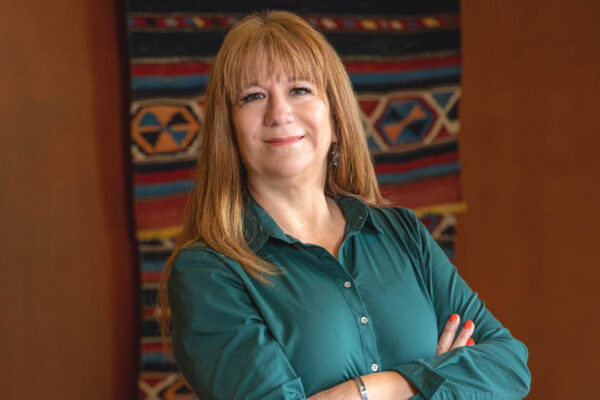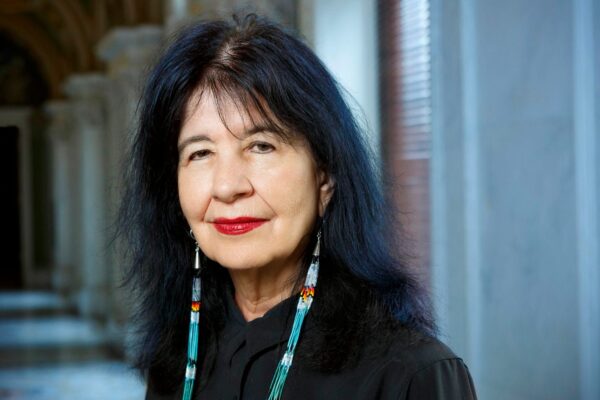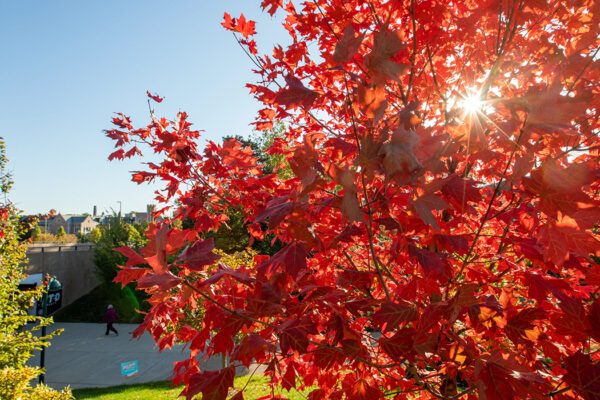An oak tree that had guided Illinois travelers for nearly three centuries collapsed on April 20, 2008. Today, its spirit endures on the Washington University in St. Louis campus, maintaining an ancient practice of human connection with nature.
Born in northern Illinois around 1730, that fallen oak, known as “Pathfinder,” was among the last of the “trail marker trees.” Native American people bent these trees, usually red or white oaks, to point toward resources or significant locations. Pathfinder directed sojourners toward a creek crossing of the Sangamon River.
Soon after the tree’s collapse, oak expert and Starhill Forest Arboretum owner Guy Sternberg was on the scene, working to preserve Pathfinder’s legacy. He gathered scion wood (that is, tree cuttings) and then arranged for genetically identical clone trees to be grafted.
WashU lead groundskeeper Cody Azotea initially brought Pathfinder to the university’s attention.
“I was trying to educate myself with other arboreta and plant species to create a unique arboretum experience at WashU,” Azotea said. “And while all tree species have ecological value, oaks in particular are very valuable for ecosystem function. I didn’t know what a trail marker tree was until introduced to them through Guy Sternberg’s work.”

One of Sternberg’s clones was introduced Oct. 30 near Hillman Hall at a Native American-led tree planting ceremony organized by the Brown School’s Kathryn M. Buder Center for American Indian Studies. Invited guests included those who assisted in the grafting process and members of St. Louis’ small yet diverse Native American community, close partners of the Buder Center. Historically, the St. Louis area was inhabited by the Illini, Osage and Missouria peoples, among others, many of whom were removed, displaced or relocated during westward expansion.
“The planting ceremony was as much about education as it was about tradition,” said Eric Pinto, community projects coordinator at the Buder Center. “Not all Native people are going to be aware of trail marker trees, and not all tribes used them.”
Yet this was not the first time Sherry Echohawk Taluc and Saundi Kloeckener of the Native Women’s Care Circle, a prayer group supporting health and welfare in the local Native American community, have prayed for the “long-standing ones.” At the ceremony, Taluc delivered a territorial welcome, while Kloeckener distributed gifts of flat cedar and braided sweetgrass. As the planting took place, people sung as Kloeckener guided attendees in an offering of tobacco to the tree.
“We use tobacco as a way to offer prayer,” Kloeckener said. “The DNA of that tree has seen so much and that’s in the memory of the tree. We need to come back to looking at all those plant relatives as kin.”
The tree will now take root for three to five years before the bending process begins and the tree is pointed in a specific direction. To where is still a matter of discussion among the local Native American community.
One option is eastward.
“The east has spiritual significance among many Native tribes and, in terms of resources, we’ve got the big Mississippi River in that direction,” Pinto explained. “It’s also about decolonizing the teachings of the westward movement. We’re in St. Louis, ‘gateway to the West,’ so pointing to the east fights that ideology of westward expansion.”
Regardless of where the tree points, the Buder Center, Pinto and the Care Circle are pleased to preserve the life and existence of this trail marker tree.



